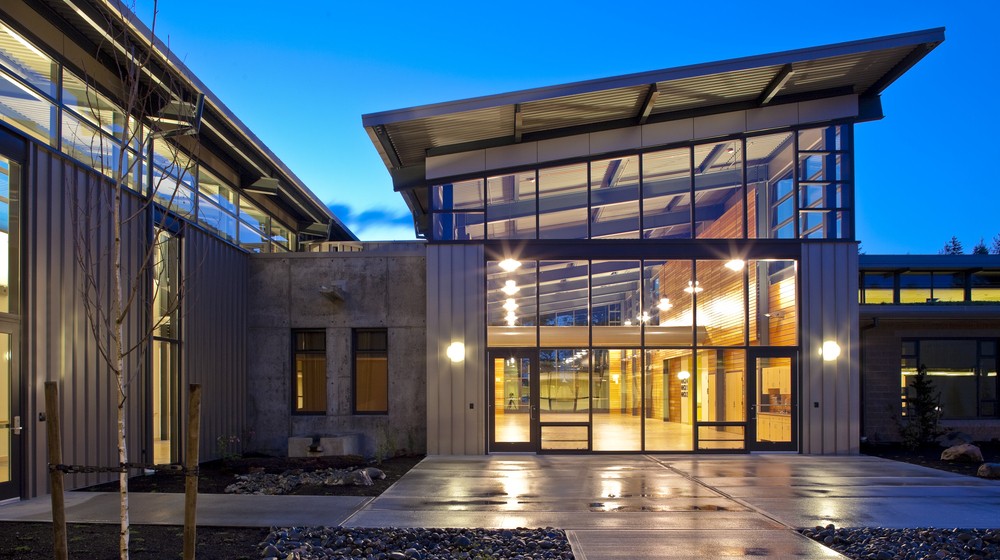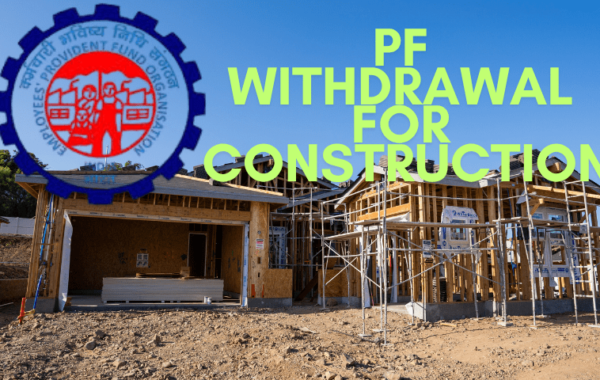
Unveiling the Elegance: A Comprehensive Guide to Porticos and Their Significance in Home Design
Introduction:
Porticos is a timeless and charming architectural feature that adds character to a home’s entrance. In this detailed guide, we will see into the essence of porticos, exploring their types, uses, architectural styles, elements, and the profound impact they can have on a house. Additionally, we’ll shed light on architectural companies’ vital role in portico construction, the weather protection they offer, and their influence on home value.
Porticos: An Overview
Types of Porticos:
Porticos, with their timeless charm and architectural significance, come in various types, each adding a unique flair to the entrance of a house. Let’s see the types of porticos,
Front Porch Porticos:
Attached to the front of the house, front porch porticos are the most common type. They extend outward, often featuring columns or pillars supporting a roof structure. This design enhances curb appeal, provides a covered entry, and creates a warm and inviting welcome for guests.
Side Entry Porticos:
Positioned on the side of the house, side entry porticos offer a stylish alternative to front porch designs. They add visual interest to the exterior, providing a covered entry while presenting a different approach to the traditional entrance.
Detached Porticos:
Detached porticos are standalone structures separate from the main building. Placed in gardens or courtyards, they create a distinct focal point. These porticos serve as outdoor gathering spaces and contribute to the overall landscaping design, offering a unique and versatile addition to the property.
Classical Porticos:
Inspired by classical architectural styles, these porticos often feature iconic columns like Doric, Ionic, or Corinthian. Classical porticos bring a sense of grandeur and timelessness, harkening back to ancient architectural influences.
Modern Porticos:
Embracing sleek lines and contemporary aesthetics, modern porticos focus on simplicity and minimalism. These designs often incorporate unconventional materials and geometric shapes, complementing the clean lines of modern architecture.
Curved Porticos:
Departing from traditional straight lines, curved porticos introduce a sense of fluidity and grace. These designs can soften the overall appearance of the entrance, creating an inviting and dynamic visual effect.
Each type of portico caters to different architectural preferences and practical needs, allowing homeowners to choose a design that harmonizes with the overall style of their house. Whether it’s the classic appeal of front porch porticos or the modern sophistication of detached structures, the versatility of portico designs ensures a style to suit every taste and architectural context.
Architectural Styles:
Architecture, a dynamic reflection of cultural, historical, and artistic evolution, spans various styles that have left an indelible mark on the built environment. From the grandeur of classical antiquity to the sleek lines of modernity, each architectural style encapsulates a unique narrative.
Classical Architecture:
Inspired by ancient Greek and Roman designs, classical architecture embodies timeless elegance. Characterized by symmetrical proportions, columns (Doric, Ionic, Corinthian), and pediments, iconic structures like the Parthenon and Pantheon showcase its enduring influence.
Gothic Architecture:
Thriving during medieval Europe, Gothic architecture boasts pointed arches, ribbed vaults, flying buttresses, and intricate detailing. Notable examples include the Notre Dame Cathedral and Westminster Abbey, displaying a sense of divine splendor.
Renaissance Architecture:
The Renaissance witnessed a revival of classical ideals, leading to a focus on proportion, domes, and columns. St. Peter’s Basilica and the Palazzo Medici Riccardi exemplify the harmonious blend of classical elements during this era.
Baroque Architecture:
Reacting against Renaissance simplicity, Baroque architecture is characterized by drama and ornamentation. Elaborate curves, grandeur, and intricate detailing define the Versailles Palace and St. Peter’s Square.
Neoclassical Architecture:
Emerging as a response to Baroque excess, neoclassical architecture emphasizes restraint. Symmetry, columns, and pediments are prevalent in structures like The White House and the British Museum.
Victorian Architecture:
The Victorian era introduced eclectic designs featuring elaborate ornamentation, steep roofs, and the use of iron and glass. The Painted Ladies in San Francisco and St. Pancras Station exemplify the diversity of Victorian architecture.
Art Nouveau:
Characterized by organic forms and flowing lines, Art Nouveau drew inspiration from nature. Casa Batlló and Paris Metro entrances showcase this style’s emphasis on decorative elements.
Modern Architecture:
In the 20th century, we witnessed a departure from tradition with modern architecture. Clean lines, open spaces, and a focus on functionality define structures like Fallingwater by Frank Lloyd Wright and the Bauhaus School.
Postmodern Architecture:
Challenging the rigidities of modernism, postmodern architecture embraces eclecticism. Playful use of forms, historical references, and bold colors are evident in structures like the Walt Disney Concert Hall and the Portland Building.
Contemporary Architecture:
From the late 20th century to the present, contemporary architecture is characterized by evolving styles and sustainability. The Shard in London and the Beijing National Stadium showcase modern design’s dynamic and innovative nature.
Architectural styles serve as a visual chronicle, narrating the story of human creativity, adaptation, and cultural shifts over time. The diversity within these styles showcases the ever-evolving nature of architecture as both an art form and a reflection of societal values—sleek lines of Modern architecture.
Elements of a different types of Portico:
Columns or Pillars:
As both structural support and decorative elements, columns or pillars are a defining feature of a portico. They come in styles such as Doric, Ionic, or Corinthian, each offering a unique visual character.
Roof Structure:
The roof of a portico provides shelter and protection from the elements. Depending on the overall architectural design, it can take different forms, including gable, hipped, or domed roofs.
Pediment:
The pediment is positioned above the entrance, a triangular or segmental structure that crowns the portico. It often serves as a canvas for decorative elements, adding a touch of elegance to the overall design.
Entablature:
The entablature consists of horizontal bands supported by the columns and includes the frieze, cornice, and architrave. It contributes to the overall proportions and detailing of the portico.
Frieze:
Found within the entablature, the frieze is a horizontal band that may feature ornamental reliefs, sculptures, or decorative motifs, enhancing the visual richness of the portico.
Architrave:
Positioned immediately above the columns, the architrave is a horizontal beam that spans the space between columns, providing a transition from the vertical elements to the roof.
Capital:
The capital is the topmost part of a column or pillar, transitioning between the column and the horizontal elements. Different architectural orders have distinct capital designs, contributing to the overall style.
Base:
While only sometimes visible, the base supports the columns and helps anchor them to the ground. It adds stability and completes the visual composition of the columns.
Impacts of Types of Porticos in a House
Weather Protection:
The roof structure of a portico offers practical shelter, protecting the entrance from the elements. This weather protection ensures that residents and visitors can enter and exit the house comfortably, irrespective of prevailing weather conditions.
Impact on Home Value:
House porticos often enjoy heightened perceived value in the real estate market. Prospective buyers are drawn to the architectural sophistication and practical benefits of a well-crafted house with a door.
Curb Appeal:
A well-designed portico enhances the exterior aesthetics, serving as a focal point that captivates onlookers. This heightened curb appeal adds charm and contributes to the overall visual harmony of the property, making it more appealing to potential buyers.
Welcoming Entrance:
The portico creates a welcoming entry, signaling hospitality and offering a sheltered space for residents and guests. Its presence transforms a mere doorway into an inviting and elegant access point.
Functional Outdoor Space:
Beyond aesthetics, a portico can serve as a functional outdoor space. Whether it’s a quiet retreat or a gathering spot, this extension provides a versatile area for leisure and social activities, further enhancing the overall livability of the home.
The Role of Architectural Companies
Customized Design:
Collaborating closely with homeowners, architectural firms tailor portico designs to suit individual preferences, ensuring that the structure seamlessly integrates with the house’s overall aesthetic.
Structural Expertise:
Architects bring their expertise to the table, ensuring that the portico is aesthetically pleasing and structurally sound. They consider factors like load-bearing capacity, materials, and adherence to building codes, guaranteeing a safe and durable addition.
Material Selection:
Guiding homeowners through material choices, architects help select durable and visually appealing components for the portico. The architectural firm ensures that the chosen materials align with aesthetic preferences and environmental considerations, whether it’s the columns, roofing materials, or decorative elements.
Project Management:
Architectural companies oversee the construction process,by coordinating with builders, contractors, as well as other stakeholders. This comprehensive project management ensures not only the portico is constructed efficiently,but also within budget, and adhering to the proposed design.
Aesthetic Harmony:
Architects not only ensure that the portico is seamless, but also it integrates with the existing architecture. From historical styles to contemporary designs, the architectural firm provides that the door enhances the overall visual harmony of the house.
Conclusion:
The portico is not only merely an architectural embellishment but also, it is a functional and impactful addition to a home. The portico is an excellent example of how form and function can be seamlessly integrated, offering shelter from the elements as well as improving curb appeal and property value. As homeowners embark on the journey of creating or maintaining their doors, the guidance of architectural companies becomes invaluable, ensuring a harmonious blend of style and practicality that withstands the test of time. Hence, Cibi+Simeon Designs, the leading architectural firm in Chennai, guides clients with extraordinary and suitable ways to have different styles and types of porticos. We must bring your desire to the real world and make it feasible. Hire us for turnkey interior and architectural services.


